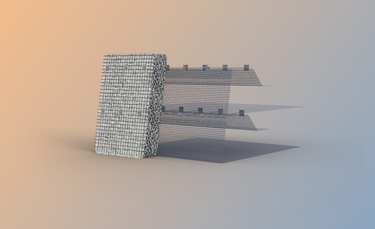Our calculation works: The comparison between conventional construction and geotextile landfill waterproofing illustrates the astonishing reduction of CO2 emissions and tire abrasion.

Our calculation works: The comparison between conventional construction and geotextile landfill waterproofing illustrates the astonishing reduction of CO2 emissions and tire abrasion.
How does the use of our geotextiles actually affect the environment, in concrete comparison? We wanted to know more about it and got to the bottom of the matter "logistically". After all, we have long been aware that tire downforce accounts for the largest part of the world's microplastics, which ultimately end up not only in water, but also in the human body. Our products help to significantly reduce this.
Our comparison was based on 4,500 m2 of landfill space and two construction methods: one with a seal made of conventional clay and the other side a waterproofing made of geotextile bentonite mats Tektoseal® Clay from HUESKER.
Okay, let's anticipate the result: We needed exactly 1 truck to transport our space-saving geotextiles, while 203 trips were necessary for the conventional material! This fact alone saves construction time, construction noise, energy, resources and CO2 emissions – as our graphic vividly illustrates.
Advantages on the emission side of clay waterproofing membranes
Although CO2 emissions may still seem abstract to many people, the low transports for delivery underline the advantage of geogrids. 94% more CO2 is produced for the transport of the conventional material. In addition, there is the additional CO2 pollution due to the higher use of machines during paving, which is considerably lower with the geotextile variant. But, if you take a closer look at the result, another point comes into play, which is small in the truest sense of the word, but at least as important:
Fewer journeys = less tyre wear = less microplastics
The fact is that the abrasion of car tyres is the number 1 source of microplastics. More than 200 truck journeys (25 km each) result in more than 17 kg of this. And further proof that all parameters must be incorporated into a meaningful environmental balance.
Yours, Rony
